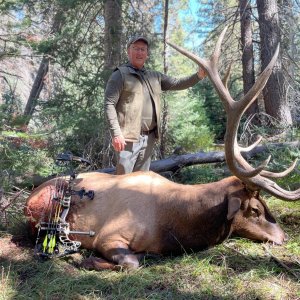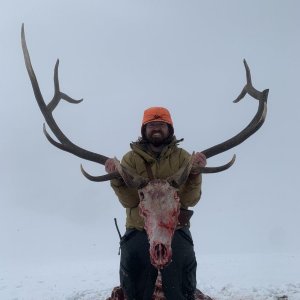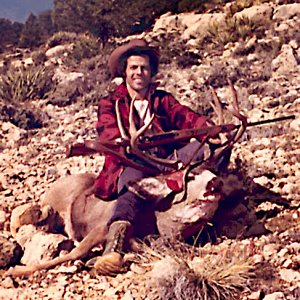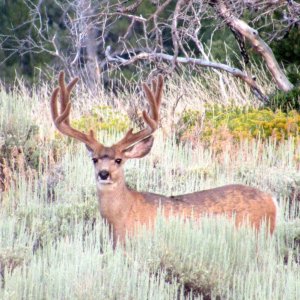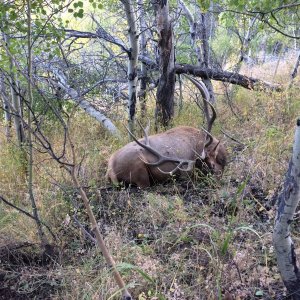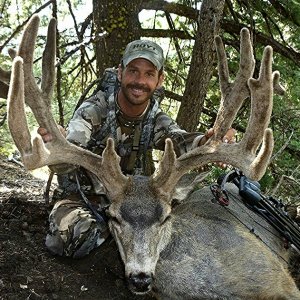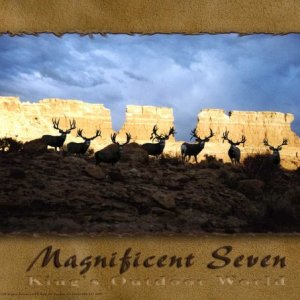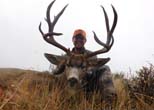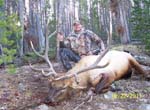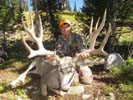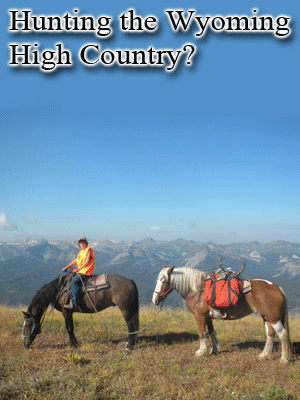Anyone that hunts antelope often likely will agree that just as soon as they think they have field judging antelope bucks down they get fooled with ground shrinkage. I've been hunting antelope since I was a kid growing up in Wyo. It doesn't happen often but I sometimes get fooled!
Mass is a giant chunk of pronghorn score. If you mess up on mass measurements you are likely doomed! If a buck doesn't have mass all the way to the tips he likely won't score that well. Most of the B&C bucks I've harvested in Wyo have bases close to the magical 7" mark. The 2nd thing I look for is prongs. Generally speaking a Wyo buck has to have at least 5" prongs to be close to B&C. There aren't very many bucks in the units I've hunted in Wyo that are over 15 6/8" in length. If a buck's horns lack in one area he'll have to make up for it somewhere else.
Generally speaking, after looking over hundreds of bucks if you have a question whether a buck will make B&C I would likely keep looking. It's always important to look at bucks in detail through a spotting scope from different angles. Sometimes it may mean waiting 30 minutes while he's staring you down to turn his darn head! I hardly ever shoot a buck without getting several angled views...it can certainly change things in a hurry!
Some guys swear by using ears, eyes, and nose lengths as reference for horn length, mass, and other measurements. I've lost count of how many times this has gotten me in trouble with ground shrinkage! I've found that antelope are similar to humans. Some may have longer noses, bigger eyes, and shorter ears in the same general area.
I know a couple hunters that turned down a buck along a major road several years ago. When I looked at the same buck from different angles I immediately could tell he was a monster with incredible mass. His prongs were a chunk longer than first expected because his incredible mass kind of hid prong length. I told my buddy in the truck if he didn't shoot him I would! There was no ground shrinkage when we walked up to that buck. He scored just over 85 B&C.
Sometimes there are bucks that get overlooked and passed up because they may not appear to have mass, prongs, etc and their true measurements are tough to see from certain angles. As an example, some bucks may have oval horns while others may have round horns. Round horned bucks may not appear to be very heavy from a front or side view. A super narrow =spayed horn that is oval shaped might look heavier than it actually is when viewed from the side. A front view may show that he isn't as massive. Are you confused yet?
Some bucks may look super tall but don't have any curl. Some may have an incredible amount of heart shaped curve that hides their true length. Some bucks when viewed from the front my look short because they curl backwards. Some bucks may have a wider spread so may appear short from a side view. There are so many different horn confirmations! It usually takes a lot of time and practice to figure many of these things out. If you hunt the same area year after year you start figuring out tendencies for super bucks in that particular area. Some units will likely never produce bucks with 7" bases or bucks with 6" prongs.
I would agree that when you see a monster buck you likely will know it. These bucks usually have the same horn confirmation that everyone seems to like. There usually aren't many of them in any given unit because they usually don't live very long lives unless they live in super remote and isolated country.
I would also agree that 80 or 82"+ bucks just aren't that common. Some units may not even have 1 B&C buck in it in any given year so it's like finding a needle in a haystack. Some years (like this year in Southern Wyo) winterkill may be super tough on older age class bucks and there may not be any B&C bucks in one of the best historic B&C units in the state! There is always the chance that 1 may have made it through! Drought can also severely change things....which is another long story!
With all that said, I would crawl out on a limb and say pronghorn are one of the toughest game animals to field judge properly. Good luck to everyone with tags this year!



